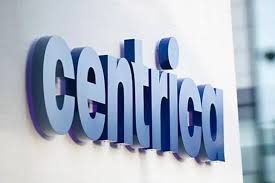Marks and Spencer Group PLC (MKS.L), a stalwart in the consumer cyclical sector, continues to evolve within the ever-changing landscape of department stores. With a rich history dating back to 1884, this British retail giant has been a staple in many households across the United Kingdom and beyond. Today, investors are keenly observing its strategic manoeuvres and financial performance as it seeks to sustain growth and remain competitive.
Trading on the London Stock Exchange, Marks and Spencer currently holds a market capitalisation of $7.71 billion. Its share price, recently pegged at 377.8 GBp, has seen a minor dip of 0.01%, but remains well within the 52-week range of 261.10 to 411.30 GBp. This stability suggests a measure of resilience, albeit with room for further appreciation.
A closer examination of the valuation metrics reveals the absence of a trailing P/E ratio, which might raise eyebrows among some investors. However, the forward P/E of 1,216.51 suggests expectations of substantial earnings growth, albeit with an element of risk. The lack of a PEG ratio and other traditional valuation metrics like Price/Book and Price/Sales could indicate that Marks and Spencer is in a transitional phase where usual metrics do not fully capture the essence of its current valuation.
Performance-wise, the company has posted a respectable revenue growth of 5.70%, a testament to its strategic initiatives, especially in the UK Clothing & Home and UK Food segments. However, the net income remains undisclosed, which might warrant further scrutiny from investors. The company’s earnings per share (EPS) stands at 0.24, supported by a robust return on equity of 16.91%, indicating efficient use of shareholder funds. Notably, the free cash flow figures at over 482 million reinforce the company’s ability to generate liquidity and potentially fund future growth ventures.
Marks and Spencer’s dividend yield of 0.79% might appear modest compared to other retail giants, yet the low payout ratio of 12.40% suggests a cautious approach, likely prioritising reinvestment and debt management over immediate shareholder returns. This strategy could align with the company’s long-term vision to solidify its market position.
From an analyst perspective, the sentiment leans positively with 13 buy ratings, complemented by 3 hold and a solitary sell recommendation. The target price range extends from 342.00 to 475.00 GBp, with an average target of 428.53 GBp, implying a potential upside of 13.43%. This optimism reflects confidence in the company’s trajectory and strategic initiatives, such as its ventures in online retailing and renewable energy.
Technically, the stock’s 50-day and 200-day moving averages, at 363.65 and 360.41 respectively, underscore a consistent upward momentum. However, the Relative Strength Index (RSI) of 89.56 indicates that the stock might be overbought, suggesting investors should tread carefully in the short term. The MACD and signal line readings further hint at potential volatility, which could be a consideration for those eyeing entry or exit points.
Marks and Spencer’s diverse operational segments, ranging from clothing and food to financial services and real estate, provide a broad spectrum for growth and profitability. Its strategic push into online markets and international expansion underscores a commitment to adapt and thrive in a digital-first economy.
As Marks and Spencer navigates its next phase of growth, individual investors should weigh the potential rewards against the inherent risks. The company’s ability to leverage its brand heritage while embracing innovation will be pivotal in defining its future success. Investors with a keen eye on long-term potential may find Marks and Spencer an intriguing prospect in the dynamic world of retail.





































